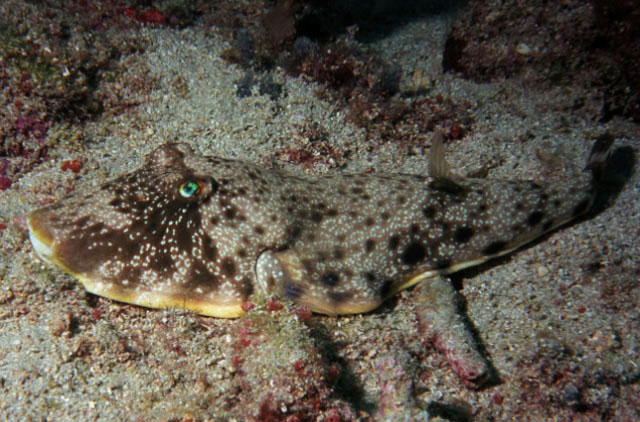| Tetraodontidae (Puffers), subfamily: Tetraodontinae |
| 30 cm TL (male/unsexed) |
|
reef-associated; brackish; marine; depth range 0 - 11 m |
| Western Atlantic: northeastern Florida and northern Gulf of Mexico in the USA and the Bahamas to Campeche in Mexico and Lesser Antilles. Taxonomic status of populations from northern South America to Brazil uncertain. |
|
Dorsal spines (total): 0-0; Dorsal soft rays (total): 8-8; Anal spines: 0-0; Anal soft rays: 7-7. Upper side brown with large dark grey to black spots and light (pale blue or green in fresh specimens) irregular-shaped reticulations. Lower side with an irregular row of dusky to black rounded spots. The axil spot the most intense in the series. Sexually mature, ripe males sometimes covered with brilliant red or orange spots of about 1 mm in diameter (white in preserved specimen). No lappets on head or body (Ref 53033). |
| Inhabits bays, estuaries and protected coastal waters. Feeds primarily on shellfish, also on some finfish (Ref. 3821). |
|
Least Concern (LC); Date assessed: 07 June 2011 Ref. (130435)
|
| harmless |
Source and more info: www.fishbase.org. For personal, classroom, and other internal use only. Not for publication.
